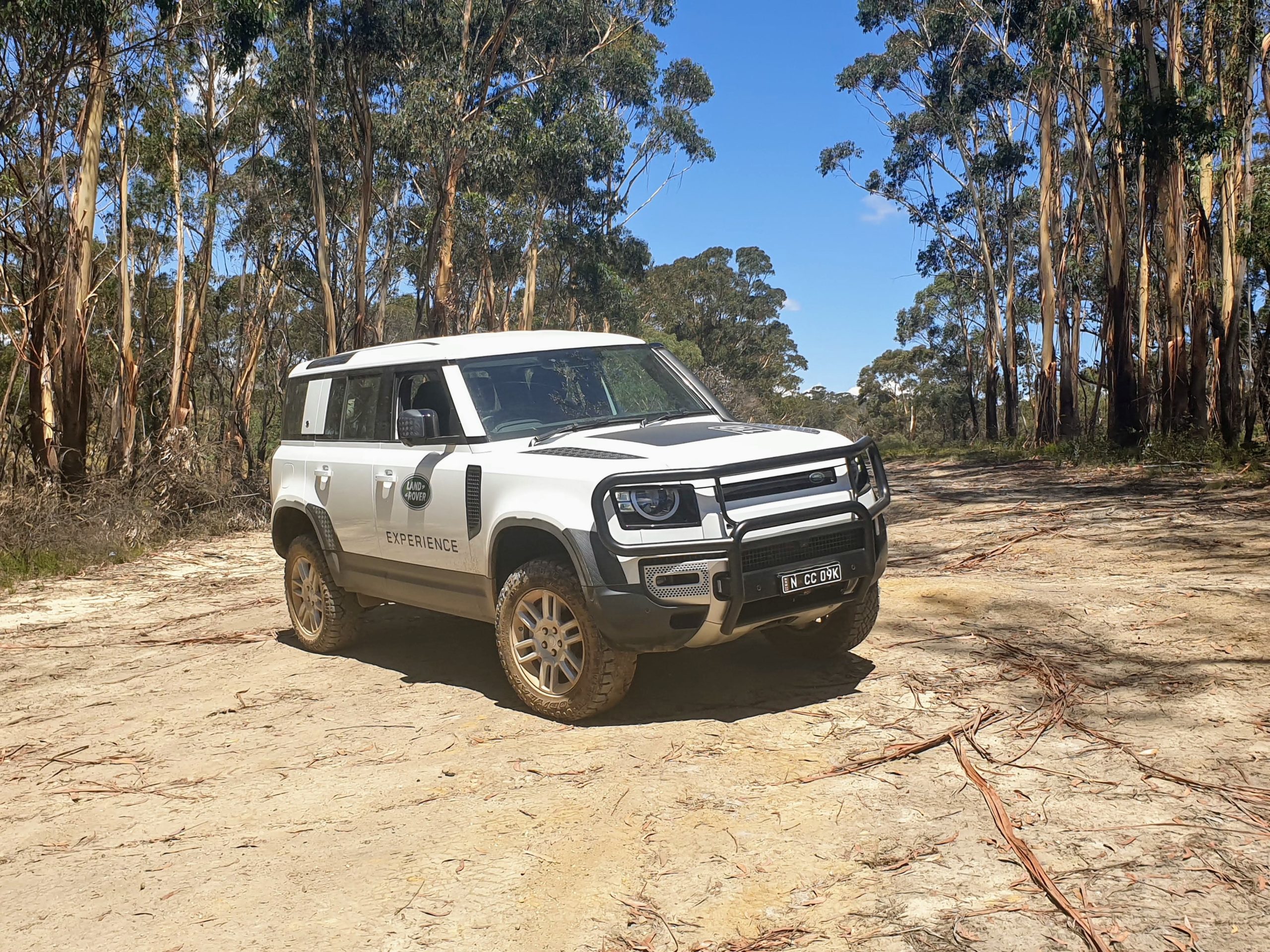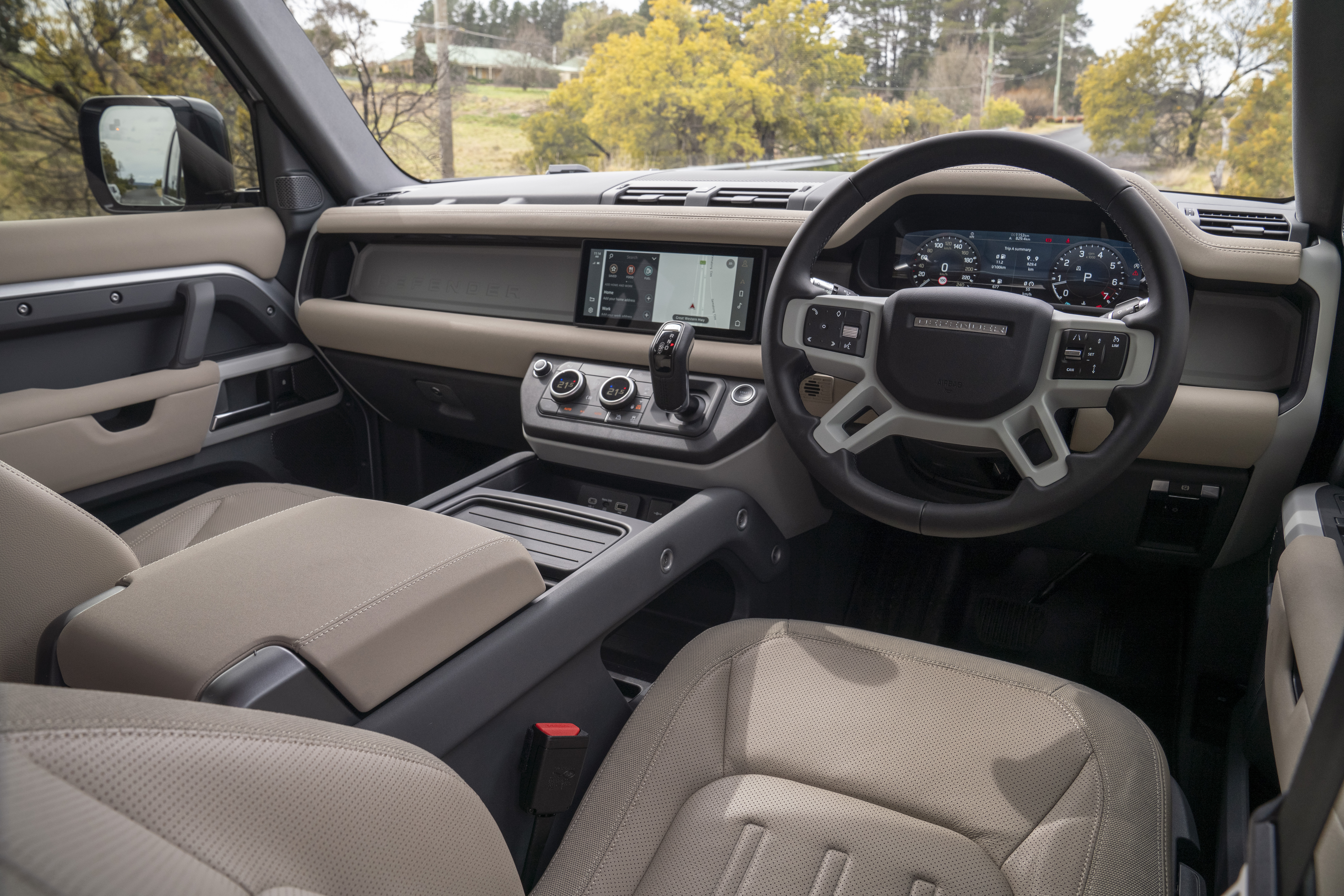
What is it?
It’s the all-new Defender – only the second of its kind in nearly 70 years. We’ve already tested it on the road, which is where many (dare I say, most) people will use it as family transport. But for true Landie aficionados a true Defender must be capable off-road. In fact, it can’t just be capable, it must be at home in mud, dirt, sand and snow.
Check out how many original Defenders are used by safari companies, off-road adventurers and farmers and it’s pretty clear why it has a reputation as a go-anywhere machine. So having got to know the Defender already, we took it to the next level and went bush to see how it lives up to Land Rover’s reputation.
REVIEW: 2020 Land Rover Defender 110
Does it have any racing pedigree?

Of a fashion. When Prodrive was looking for a support vehicle for its attack on this year’s Dakar Rally it turned to the Defender. A pair of the new 110 were equipped to serve as transport for the two-week endurance event across the Saudi Arabian desert.
What’s under the bonnet?
We’re testing the P400 model, which is powered by a 3.0-litre turbocharged inline six-cylinder petrol engine, paired to an eight-speed automatic transmission and four-wheel drive system. It makes 294kW of power and 550Nm of torque which is enough to give even this big SUV brisk (but not sporty) performance.

Importantly, the torque comes on in a linear manner and is available from low down in the rev range – peak torque is steady between 2000-5000rpm – which helps it off-road. It means when you want to carefully power through a rut or over a rock, you don’t need to work the engine hard or get a head of steam up, the Defender simply has the pulling power you need when you need it.
How does it handle?
To put the Defender to the test off-road we headed to the scenic Blue Mountains, where a variety of tracks give Sydney-based enthusiasts a chance to test themselves and their vehicle. As we discovered last time, the new Defender is a massive step ahead of its predecessor in terms of on-road manners, making the two-hour journey down the freeway and across the mountains comfortable and refined.

Once we got unsealed roads underneath the off-road Goodyear Wrangler tyres, the new Defender felt just as confident as the old model did. But there’s a massive difference between the old and new Defenders when you start putting it to the test in various scenarios.
Whereas the old Defender was a mechanical machine, overcoming problems with old-fashioned engineering, the new Defender does it with electronics, employing all of the accumulated knowledge Land Rover amassed across the last six decades. While they go about things in a very different manner, the result is the same – the Defender will go anywhere you put it.
We challenged it against some slippery descents, muddy climbs, rocky drops and dips, water splashes, sandy tracks and gravel roads and at no point did the Defender feel flustered. To be honest, we didn’t feel like we scratched the surfaces of its potential (in large part because we didn’t have a support vehicle if we pushed too far) but the Defender managed so many challenges with ease that it would take a lot to really catch it out.

Where the technology really makes the new Defender different from the old model is how easy it makes navigating obstacles with its various cameras. There are cameras on every side of the vehicle and they can be displayed in various ways on the central infotainment screen. So, for example, you can get a 3D digital representation of the car to see where it’s positioned and navigate accordingly. For serious off-roaders it will feel like cheating, but for those new to it (or just not wanting to scratch their expensive Land Rover) it’s a great new functionality.
And that’s really the biggest take-away from our off-road experience in the new Defender. The old model was an analogue off-roader, whereas the new version is digital.
Where would you most like to drive it?
Even our brief off-road experience made me want to enter the Dakar Rally or trek across the Australian outback. It’s a highly-capable off-roader so it makes driving on loose surfaces enjoyable, even for someone with limited experience such as myself.

I grew up focused on driving on sealed roads and racetracks, but driving off-road offers the same excitement and thrills – just in a completely different way. What’s so interesting about it is the goal in both instances is the same – to keep a car under control and balancing it on its limits – but one you do at high-speeds and the other at 10km/h.
It may sound strange to those who haven’t tried it, but I highly recommend going bush (in a suitable vehicle) whenever you get the chance.
What’s the interior like?
As we wrote in our previous review, the interior of the new Defender is a major leap forward from the old model. It’s a thoroughly modern luxury SUV cabin, with comfortable seats, nice materials and plenty of entertainment and technology goodies.
Importantly for off-roading the cabin provides good visibility and plenty adjustment of the seat and steering wheel so you can feel confident as the driver that you can place the car where you need to.

Is it good value for money?
Land Rover has well and truly moved into the premium territory previously reserved for Range Rovers. The Defender isn’t a cheap off-roader, the 110 P400 S we tested here starts at $91,790 (plus on-road costs), and that’s the entry-grade trim for the P400.
There are plenty of choices for those looking for a family-friendly but off-road capable SUV too thanks to the recent resurgence of ute-based SUVs. The likes of the Ford Everest, Isuzu MU-X, Toyota Fortuner and Jeep Wrangler (to name a few) offer a similar package to the Defender, albeit without the same level of on-road and cabin refinement. So you’ll have to ask yourself how much you’re willing to pay for more luxury to go with your capability.
Would I buy one?
Yes, it may be more expensive than the competition but it offers more technology and ultimately that helps it feel more capable – even if it isn’t. It can be an easy machine to off-road if you deploy all the gizmos and cameras, or if you prefer a challenge you don’t have to use them.

More importantly, the new Defender’s ability to be a comfortable and sophisticated SUV when you’re back on the sealed roads makes it an ideal car for work and play.
While the old Defender was an icon and was always going to be hard to replace, this new model continues to grow on me as a worthy successor – both on and off-road.
2021 Land Rover Defender 110 P400 S price and specifications
| Price: | From $91,790 plus on-road costs |
| Engine: | 3.0-litre six-cylinder turbo petrol |
| Power: | 294kW at 5500rpm |
| Torque: | 550Nm at 2000-5000rpm |
| Transmission: | Eight-speed automatic, four-wheel drive |
| Fuel use: | 9.9L/100km |
| Wheels: | 19-inch alloys |
| Tyres: | 255/65 R19 |
| Length: | 4758mm |
| Width: | 1967mm |
| Height: | 2008mm |
| Weight: | 2418kg |
| 0-100km/h: | 6.1 seconds |













Discussion about this post